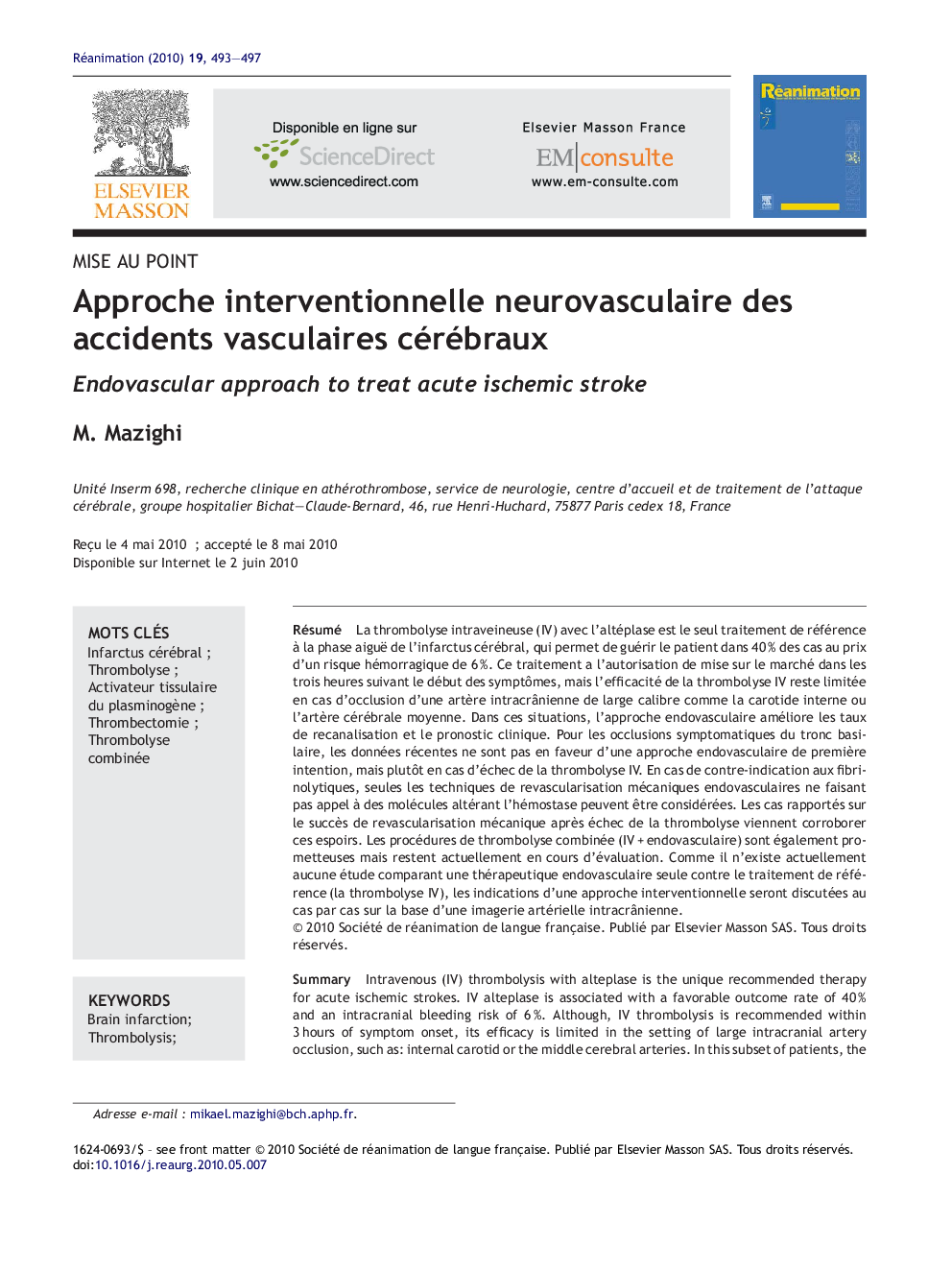| Article ID | Journal | Published Year | Pages | File Type |
|---|---|---|---|---|
| 2613154 | Réanimation | 2010 | 5 Pages |
Abstract
Intravenous (IV) thrombolysis with alteplase is the unique recommended therapy for acute ischemic strokes. IV alteplase is associated with a favorable outcome rate of 40Â % and an intracranial bleeding risk of 6Â %. Although, IV thrombolysis is recommended within 3Â hours of symptom onset, its efficacy is limited in the setting of large intracranial artery occlusion, such as: internal carotid or the middle cerebral arteries. In this subset of patients, the endovascular approach increases recanalization rates as well as favorable outcomes. On the opposite, in symptomatic basilar artery occlusions, recent data do not favor intra-arterial approach as a first-line therapy, but in the situation of IV thrombolysis failure. Combined thrombolysis (IVÂ +Â endovascular) approach shows interesting potential, but is still under investigation. In case of contraindication for thrombolysis, only mechanical revascularization techniques can be considered. Several series reporting the success of mechanical revascularization procedures after IV thrombolysis failure are promising. Due to the absence of randomized study evaluating endovascular therapy alone versus the gold standard (IV thrombolysis) in acute stroke patients, intra-arterial therapy indications will be considered on a case-by-case approach based on the results of intracranial arteries imaging.
Keywords
Related Topics
Health Sciences
Medicine and Dentistry
Emergency Medicine
Authors
M. Mazighi,
